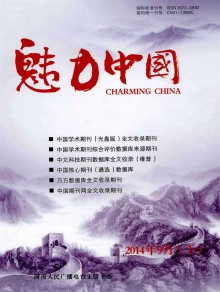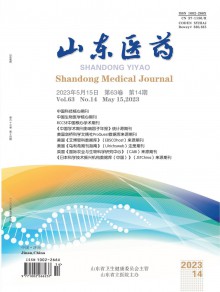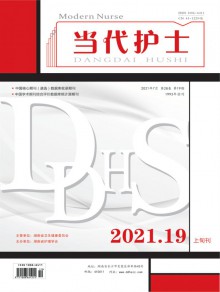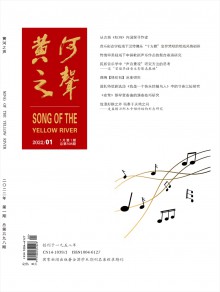关节镜下360°松解治疗原发性冻结肩
时间:2025-04-08
袁锋 蔡俊丰 马敏 罗树林 周炜 卢亮宇 潘张毅 曾文 尹峰
·论著·
关节镜下360°松解治疗原发性冻结肩
袁锋 蔡俊丰 马敏 罗树林 周炜 卢亮宇 潘张毅 曾文 尹峰
目的 观察关节镜下360°松解治疗原发性冻结肩的临床疗效。方法 自2010年10月至2012年10月上海同济大学附属东方医院就诊的原发性冻结肩患者86例,其中男性36例,女性50例,平均年龄(60.5±8.0)岁(45~78岁),核磁共振均未见肩袖、盂唇等肩关节损伤。经过正规保守治疗6个月以上无效。86例患者均在关节镜下行360°松解,所有患者于治疗前后采用Constant肩关节功能评分和视觉模拟评分(visual analogue scale,VAS)进行疗效评估。结果 手术均顺利完成,切口均Ⅰ期愈合,无相关并发症发生。86例患者均获随访,平均随访时间(36.6±6.7)个月(24~48个月)。术后12个月Constant肩关节功能评分为(92.7±2.7)分,与术前(55.9±5.5)分比较,差异有统计学意义(t=-60.522,P<0.01)。术后12个月肩关节疼痛VAS评分为(0.4±0.7)分,与术前(8.3±1.1)分比较,差异有统计学意义(t=-58.928,P<0.01)。术后未出现继发性肩关节不稳。结论 关节镜下360°松解术治疗冻结肩具有良好的临床疗效,该疗法具有创伤小、恢复快、安全、可靠等优点。
关节镜;松解;原发性冻结肩
冻结肩是以肩关节疼痛和活动不便为主要症状的常见病症,好发年龄在50岁左右,女性发病率略高于男性,多见于体力劳动者。如得不到有效的治疗,有可能严重影响肩关节的功能活动[1]。假性冻结肩往往发生于肩袖等软组织损伤或者疼痛引起的活动受限,容易造成冻结肩的误诊[2-4]。无明显诱因情况下出现的冻结肩称作原发性冻结肩。原发性冻结肩患者一般都采用功能锻炼、服药、外贴膏药、理疗、针灸和拔火罐等保守治疗,一般病程会持续2~3年,而且很多患者疗效不佳。本研究通过关节镜下360°松解治疗原发性冻结肩,缩短患者病程,提高治疗效果。2010年10月至2012年10月,本院收治的86例原发性冻结肩患者,均在关节镜下行360°松解手术治疗,疗效满意,报道如下。
图1 双后侧入路 图2 松解肱二头肌长头腱 图3 松解盂肱上韧带/喙肱韧带
资 料 与 方 法
一、一般资料
选取上海同济大学附属东方医院关节与骨病专科2010年10月至2012年10月收治的原发性冻结肩患者86例,其中男36例,女50例;年龄45~78岁,平均年龄(60.5±8.0)岁;左肩42例,右肩44例;病程3~24个月,均为无明显诱因出现的肩关节疼痛、活动受限、呈持续性加重。保守治疗均无明显效果。术前均行核磁共振检查,未见肩袖、盂唇等损伤。
二、手术方法
患者在全麻下,健侧卧位。肩关节外展45°,向15°牵引。先做后侧入路,关节镜下依次检查盂肱关节、盂唇、关节囊情况,术中未见盂唇、肩袖等损伤。术中可见关节腔间隙狭窄,滑膜充血增生。其中有8例患者由于后侧入路无法进入盂肱关节前侧,采用双后侧入路从后向前松解(图1),并解离肱二头肌长头腱(图2),未予固定。在长针导引下做前侧入路,后侧入路观察,前侧入路采用施乐辉气化电刀松解。重点松解盂肱上韧带/喙肱韧带复合体区域(图3),以能在关节镜下清楚的看到喙突为准。然后沿着盂唇边缘与关节囊的交界处,松解前侧关节囊以及上方的关节囊。再在后侧入路观察,远端做下后侧入路,沿着盂唇边缘松解后侧及腋窝处的关节囊。松解腋窝处的关节囊时,一定要注意松解的区域及深度以免损伤深处的腋神经。只要紧贴着盂唇松解,一般比较安全。再从后侧入路进入肩峰下,清理增生的肩峰下滑囊,对于肩峰下间隙狭窄的患者,予以肩峰成形。
三、术后处理
术后所有患者都由同一个康复理疗组按照相同的康复计划进行康复锻炼。术后第2天开始进行上举、外展、内旋、外旋活动度锻炼。要求患者尽快达到对侧的活动水平。2个月内不断巩固和加强被动活动度的锻炼。第3个月开始进行抗阻锻炼。一般术后3个月患者恢复正常生活运动。
四、统计学分析
结 果
所有手术均顺利完成,切口Ⅰ期愈合,无感染、血管神经损伤等并发症发生。86例患者均获随访,平均随访时间(36.6±6.7)个月(24~48个月)。患者肩关节疼痛程度及活动度均较术前明显好转(图4、5)。
术后3个月Constant肩关节功能评分[5]为(91.8±3.4)分,与术前(55.9±5.5)分比较差异有统计学意义(t=-55.501,P<0.01);术后12个月Constant肩关节功能评分为(92.7±2.7)分,与术前比较差异有统计学意义(t=-60.522,P<0.01),与术后3个月比较差异有统计学意义(t=3.135,P=0.002);术后24个月Constant肩关节功能评分为(92.7±2.6)分,与术前比较差异有统计学意义(t=61.822,P<0.01),与术后3个月比较差异有统计学意义(t=3.153,P=0.002),与术后12个月比较差异无统计学意义(t=0.293,P=0.770)。
图4 术前功能照片。图A上举受限;图B外展受限;图C外旋受限;图D后伸受限;图E反手摸背受限
图5 术后3 d功能照片。图A上举正常;图B外展正常;图C外旋正常;图D后伸正常;图E反手摸背正常
术后3个月肩关节疼痛VAS评分为(1.2±1.1)分,与术前(8.3±1.1)分比较差异有统计学意义(t=-47.657,P<0.01);术后12个月肩关节疼痛VAS评分为(0.4±0.7)分,与术前比较差异有统计学意义(t=-58.928,P<0.01),与术后3个月比较差异有统计学意义(t=-5.700,P<0.01);术后24个月肩关节疼痛VAS评分为(0.4±0.7)分,与术前比较差异有统计学意义(t=-56.562,P<0.01),与术后3个月比较差异有统计学意义(t=-5.574,P<0.01),与术后12个月比较差异无统计学意义(t=0.155,P=0.877)。
讨 论
原发性冻结肩是一类病因不明的肩关节疼痛[6],发病率为2%~2.4%[7-8],女性发病率略高于男性[9-11],尤其好发于40~60岁女性[12],且20%~30%的患者双侧发病[13]。主要以肩关节广泛的、主动、被动活动范围均明显受限为特点。对于原发性冻结肩的病变部位,有学者认为是肩关节及其周围组织的粘连,也有学者认为是盂肱上韧带挛缩或关节囊挛缩[14]又或肱二头肌腱沟粘连等[15],但至今仍无定论。越来越多的研究表明,冻结肩的发病中,喙肱韧带起到关键的作用[16]。
原发性冻结肩的治疗方法分为药物保守治疗与松解治疗,后者又分为麻醉下手法松解和手术松解两种[17]。麻醉下手法松解是一种传统的方法,即在麻醉状态下,通过手法松解关节周围的粘连组织,以恢复肩关节活动度。然而手法松解要注意缓慢、持续用力,避免使用暴力,针对不同的患者,不同医师的手法可能疗效不同。由于手法松解的盲目性,其并发症有骨折、关节脱位、肩袖损伤、盂唇损伤、臂丛神经损伤和关节周围软组织损伤等,而且由于手法松解引起的关节内出血纤维化,容易导致冻结肩的复发。因此,这种治疗方式临床上并不推荐。
手术松解,包括开放手术和关节镜微创手术。随着近年来关节镜微创外科技术和设备的进步,关节镜下松解逐渐成为治疗肩周炎的主要手段,取得非常好的临床效果[18-20]。对于关节镜松解手术,不同学者报道的手术技术不尽相同,尤其是松解范围有很大不同。有关节囊全范围松解的,包括前侧的盂肱上韧带、喙肱韧带、盂肱中韧带、盂肱下韧带、后侧关节囊[21-23];有关节囊选择性松解的,Fernandes[24]关节镜下行肩胛下肌切断,喙肱韧带切断治疗冻结肩,取得良好的效果。Smith等[19]主要松解前侧关节囊,包括盂肱上韧带、喙肱韧带、盂肱中韧带,松解至五点钟位置,直至清晰显露肩胛下肌腱,保留肩胛下肌腱。松解前侧关节囊后,测试肩关节活动度再决定是否松解后侧关节囊。Evans等[25]在松解关节囊的同时,做肩锁关节切除术,并与单纯关节囊松解术对比,发现单纯关节囊松解与附加肩锁关节切除术对术后效果比较差异无统计学意义。
究其共同点,就是分别对关节囊进行了不同程度的松解。采用关节镜下360°松解术主要包括切除肩袖间隙处的炎症滑膜,松解盂肱上韧带、喙肱韧带、盂肱中韧带和盂唇周边挛缩的关节囊,尽量保留肱二头肌长头腱。术后对于缓解肩周炎疼痛和恢复关节活动度具有明显疗效。采用关节镜下360°松解治疗原发性冻结肩以其创伤小、出血少的特点,在治疗原发性冻结肩中取得了良好的效果,肩关节镜不仅可以用来明确诊断,排除其他病变引起的关节僵直, 还可以彻底松解与肩关节活动受限有关的结构。
关节镜下采用常规的前后侧入路进行松解,可以处理大部分挛缩的关节囊,但对于下方腋窝处及后侧的关节囊,有一定的盲区。本研究采用辅助后侧入路,彻底消除了常规入路导致的盲区,真正做到了 360°松解。由于盂唇对肩关节的稳定性有一定作用,都予以保留,松解关节囊时,靠近盂唇予以关节囊的松解。术后未发现肩关节不稳。
本组患者中,有8例患者采用常规的方法,后侧入路根本无法达到盂肱关节前方的三角区域,对于这种情况,可采用双后侧入路,从后侧关节囊开始松解,然后沿着上侧关节囊向前方松解。发现这8例患者,前方的肱二头肌长头腱有严重的挛缩,周围滑膜增生严重,即使松解了后侧与上方的关节囊,仍然无法达到前方的三角区域。因此,作者采用了解离肱二头肌长头腱的方法,发现一旦肱二头肌长头腱解离,前方间隙明显增宽,长头肌腱的残端即刻远离肩胛盂。所以对于长头肌腱残端未予固定。该8例患者的术后随访中,肩关节活动度均恢复正常,未出现肩关节不稳。Constant肩关节功能评分以及肩关节疼痛VAS评分均跟其他患者无明显差异。尽管肱二头肌长头腱对于关节的稳定性起到了重要的作用,但对于严重挛缩的肱二头肌肌腱炎患者,由于其严重短缩、变性,对肩关节正常的活动度产生了关键性的影响,故采用牺牲肱二头肌长头腱的方法,来换取肩关节的活动度。此种手术方法的病例数较少,且随访时间仅2年余,有待通过更多的病例及更长的随访时间来证实此手术方法的有效性。
本组患者采用Constant肩关节功能评分和VAS评分进行疗效评估,结果取得非常满意的效果。症状术后3个月即明显改善,术后12个月进一步巩固,但术后24个月较术后12个月未有明显变化。究其原因,总结如下:(1)本研究所有患者均通过病史、体格检查、MRI检查初步筛选,关节镜下排除其他疾病,均确诊为原发性冻结肩,筛选极其严格;(2)本研究除外所有肩袖损伤、肩关节习惯性脱位、盂唇损伤及其他肩关节疾病为主要临床表现的患者,避免了其他疾病及损伤对临床效果的影响;(3)本研究术者具有丰富的肩关节镜手术经验,前期数十年的临床实践保证了手术的顺利,术后患者无感染、血管神经损伤等并发症的发生;(4)所有患者均由同一组专业康复医师指导康复,注重患者早期的功能锻炼,尤其是活动度训练,保证了手术的效果。
总之,关节镜下360°松解治疗原发性冻结肩可以彻底松解挛缩的关节囊及周围组织,具有创伤小、恢复快、切口美观、疗效确切的优点,是一种值得推荐的手术方法。
[1]DudkiewiczI,OranA,SalaiM,etal.Idiopathicadhesivecapsulitis:long-termresultsofconservativetreatment[J].IsrMedAssocJ, 2004, 6(9): 524-526.
[2]RobinsonCM,SeahKT,CheeYH,etal.Frozenshoulder[J].JBoneJointSurgBr,2012,94(1):1-9.
[3]WileyAM.Arthroscopicappearanceoffrozenshoulder[J].Arthroscopy, 1991, 7(2): 138-143.
[4]GuyverPM,BruceDJ,ReesJL.Frozenshoulder-Astiffproblemthatrequiresaflexibleapproach[J].Maturitas, 2014, 78(1): 11-16.
[5]ConstantCR,MurleyAH.Aclinicalmethodoffunctionalassessmentoftheshoulder[J].ClinOrthopRelatRes, 1987(214): 160-164.
[6]MaundE,CraigD,SuekarranS,etal.Managementoffrozenshoulder:asystematicreviewandcost-effectivenessanalysis[J].HealthTechnolAssess, 2012, 16(11): 1-264.
[7]ShahN,LewisM.Shoulderadhesivecapsulitis:systematicreviewofrandomisedtrialsusingmultiplecorticosteroidinjections[J].BrJGenPract, 2007, 57(541): 662-667.
[8]BridgmanJF.Periarthritisoftheshoulderanddiabetesmellitus[J].AnnRheumDis,1972,31(1):69-71.
[9]WrightV,HaqAM.Periarthritisoftheshoulder.I.Aetiologicalconsiderationswithparticularreferencetopersonalityfactors[J].AnnRheumDis, 1976, 35(3): 213-219.
[10]RizkTE,PinalsRS.Frozenshoulder[J].SeminArthritisRheum, 1982(11): 440-452.
[11]HandGC,AthanasouNA,MatthewsT,etal.Thepathologyoffrozenshoulder[J].JBoneJointSurgBr, 2007,89B:928-932.
[12]WongPL,TanHC.Areviewonfrozenshoulder[J].SingaporeMedJ, 2010, 51(9): 694-697.
[13]ZuckermanJD,RokitoA.Frozenshoulder:aconsensusdefinition[J].ShoulderElbowSurg, 2011, 20(2): 322-325.
[14]IzumiT,AokiM,MurakiT,etal.Stretchingpositionsfortheposteriorcapsuleoftheglenohumeraljoint:strainmeasurementusingcadaverspecimens[J].AmJSportsMed, 2008, 36(10): 2014-2022.
[15]McgahanPJ,PatelH,DickinsonE,etal.Theeffectofbicepsadhesionsonglenohumeralrangeofmotion:acadavericstudy[J].JShoulderElbowSurg, 2013, 22(5): 658-665.
[16]IzumiT,AokiM,TanakaY,etal.Stretchingpositionsforthecoracohumeralligament:Strainmeasurementduringpassivemotionusingfresh/frozencadavershoulders[J].SportsMedArthroscRehabilTherTechnol, 2011, 3(1): 2.
[17]FavejeeMM,HuisstedeBM,KoesBW.Frozenshoulder:theeffectivenessofconservativeandsurgicalinterventions-systematicreview[J].BrJSportsMed, 2011, 45(1): 49-56.
[18]AustgulenOK, ØyenJ,HegnaJ,etal.Arthroscopiccapsularreleaseintreatmentofprimaryfrozenshoulder[J].TidsskrNorLaegeforen, 2007, 127(10): 1356-1358.
[19]SmithCD,HamerP,BunkerTD.Arthroscopiccapsularreleaseforidiopathicfrozenshoulderwithintra-articularinjectionandacontrolledmanipulation[J].AnnRCollSurgEngl, 2014, 96(1): 55-60.
[20]ChenSK,ChienSH,FuYC,etal.Idiopathicfrozenshouldertreatedbyarthroscopicdebridement[J].KaohsiungJMedSci, 2002(18): 289-294.
[21]MehtaSS,SinghHP,PandeyR.Comparativeoutcomeofarthroscopicreleaseforfrozenshoulderinpatientswithandwithoutdiabetes[J].BoneJointJ, 2014, 96-B(10): 1355-1358.
[23]XuJ,ChenX,LiD,etal.Allarthroscopicreleaseoftheglenohumeraljointforseverefrozenshoulder:initialglenohumeralvisualizationthroughtrans-cuffportal[J].ArchOrthopTraumaSurg, 2013, 133(11): 1549-1556.
[24]FernandesMR.Arthroscopictreatmentofrefractoryadhesivecapsulitisoftheshoulder[J].RevColBrasCir, 2014, 41(1): 30-35.
[25]EvansJP,GuyverPM,SmithCD.Frozenshoulderaftersimplearthroscopicshoulderprocedures:Whatistherisk?[J].BoneJointJ, 2015, 97B(7): 963-966.
(本文编辑:胡桂英)
袁锋,蔡俊丰,马敏,等.关节镜下360°松解治疗原发性冻结肩[J/CD]. 中华肩肘外科电子杂志,2016,4(2):76-81.
Arthroscopic360degreereleaseforthetreatmentofprimaryfrozenshoulder
YuanFeng,CaiJunfeng,MaMin,LuoShulin,ZhouWei,LuLiangyu,PanZhangyi,ZengWen,YinFeng.
DepartmentofJointSurgery,ShanghaiEastHospital,TongjiUniversity,Shanghai200120,ChinaCorrespondingauthor:YinFeng,Email:dryinfeng@163.com
Background Frozen shoulder is a common cause for joint pain and disability in affected patients. The predilection age is 50 years, the incidence in females is slightly higher than that in males, and can be seen more often in manual workers. The function of shoulder joint could be affected seriously by this disease without appropriate treatment. Pseudo frozen shoulder often occurred after soft tissue trauma such as rotator cuff or limited activity caused by pain in the shoulder, thus cause misdiagnosis of frozen shoulder. Primary frozen shoulder refers to presence of active and passive activity limitation at multiple planes without clear history of shoulder disorders. Patients with primary frozen shoulder used to adopt conservative treatments like general functional exercise, medication, plasters, physical therapy, acupuncture and moxibustion and cupping, the general course will last for 2-3 years, and the curative effect in many patients is poor. In this study, patients with primary frozen shoulder were treated through arthroscopy release by 360 degree, course of the disease was shorten by this operation, and the effect of treatment was improved. From October 2010 to October 2012, a total of 86 patients with primary frozen shoulder were hospitalized to
arthroscopic arthrolysis by 360 degree, the curative effect was satisfactory, and it is reported as follows.Methods General information: A total of 86 patients with primary frozen shoulder were admitted into specialist department of joint and bone disease of Shanghai East Hospital affiliated to Tongji University from (October 2010 to October 2012, there were 36 males and 50 females, aged from 45 to 78 years, the mean age was (60.5±8.0) years, left shoulder involved in 42 cases and right shoulder involved in 44 cases, the course duration was 3-24 months, all patients suffered from shoulder joint pain without incentives and limited activity of the shoulder, the symptoms persisted and worsen.)The effect of conservative treatment was not obvious. Score of the shoulder joint pain based on visual analogue scale (VAS) was (8.3±1.1), and score of shoulder joint according to the Constant Score was (55.9±5.5). Preoperative magnetic resonance imaging was performed, and no rotator cuff or labral tear damage was observed. Operation method: All patients were under general anesthesia during operation, with lateral decubitus position. Shoulder was tracted with 45°of abduction and 15° of anterior flexion. Firstly, we adopted the posterior approach, inspected the glenohumeral joint, the glenoidal labrum and the joint capsule under arthroscopy, no rotator cuff or labrum injury were seen. During operation we observed synovial hyperplasia and congestion and the joint space was narrow. We failed to reach the front of the glenohumeral joint through the posterior approach in 8 patients, so we adopted the double posterior approach and performed the arthrolysis from back to front, and released the long head of biceps brachii without fixation. Although the long head of biceps tendon plays an important role for joint stability, but in patients with severe contracture of biceps tendinitis, the activity of shoulder joint was limited obviously due to the serious shortening and degeneration of biceps tendon, so we sacrificed the long head of biceps tendon for better shoulder joint motion. We performed anterior approach by the guide of a long needle and took posterior approach for observation, release was performed with a radial frequency. The focus was the release of the superior glenohumeral ligament/coracohumeral ligament complex, the standard was the clear exposure of coracoid under arthroscope. Then we released anterior and superior capsule along labrum. Next, we adopted infra-posterior approach with posterior approach for observation, released the capsule posteriorly and inferiorly. Then we transferred from posterior approach into the subacromial space and cleaned the hyperplasia of the subacromial bursa, in patients with narrow subacromial space, acromioplasty was performed.Postoperative treatment: All patients received rehabilitation program performed by the same rehabilitation therapy group. Anterior elevation, abduction, internal and external rotation exercises were performed from the second day after surgery. Patients were encouraged to excise as the contralateral activity level as soon as possible. Continuously consolidate and strengthen passive activity exercise were performed in two months. Resistance exercises were performed since the third month after surgery. Generally, patients returned to normal life after exercise for 3 months.Statistics analysis: Data were analyzed by SPSS 20.0 statistics software, the results were compared with variance analysis andttest,andP<0.05wasconsideredsignificant.Inspectionlevelofalpha=0.05.ResultsAlltheoperationsweresuccessfullycompleted,theincisionshealedwellandnocomplicationoccurred.Eighty-sixpatientswerefollowedup.Themeanfollow-uptimewas(36.6±6.7)months(24-48months).TheConstantscorewas(92.7±2.7)at12monthsaftersurgery,andtherewassignificantdifferencecomparedwiththepreoperativescores(t=-60.522,P<0.01).ThepainlevelofshoulderjointaccordingtotheVASscorewas(0.4±0.7)at12monthsaftersurgerywassignificantlydifferentcomparedwiththepreoperativeresults(t=-58.928,P<0.01).Nopostoperativesecondaryshoulderinstabilitywasobserved.ConclusionsArthroscopic360degreereleaseisaneffectivetreatmentforfrozenshoulderwithadvantagesoflesstrauma,quickerrecovery,safetyandreliability,thisnewmethodshouldbemorewidelyappliedinclinicalpractice.
Arthroscopy;Release;Primaryfrozenshoulder
10.3877/cma.j.issn.2095-5790.2016.02.003
上海市科委课题资助项目(15411968700);上海市卫生局课题资助项目(20134404);浦东新区卫生
200120上海同济大学附属东方医院关节与骨病专科
尹峰, Email: dryinfeng@163.com
2015-08-10)
系统优秀青年医学人才培养计划(PWRq2014-35)
免责声明
我们致力于保护作者版权,注重分享,被刊用文章因无法核实真实出处,未能及时与作者取得联系,或有版权异议的,请联系管理员,我们会立即处理! 部分文章是来自各大过期杂志,内容仅供学习参考,不准确地方联系删除处理!







